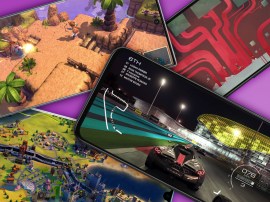Every Apple iPhone from 2007 onwards vs its top rival – which is the best each year?
How do the best phones of the past 16 years stack up against the equivalent iPhone?
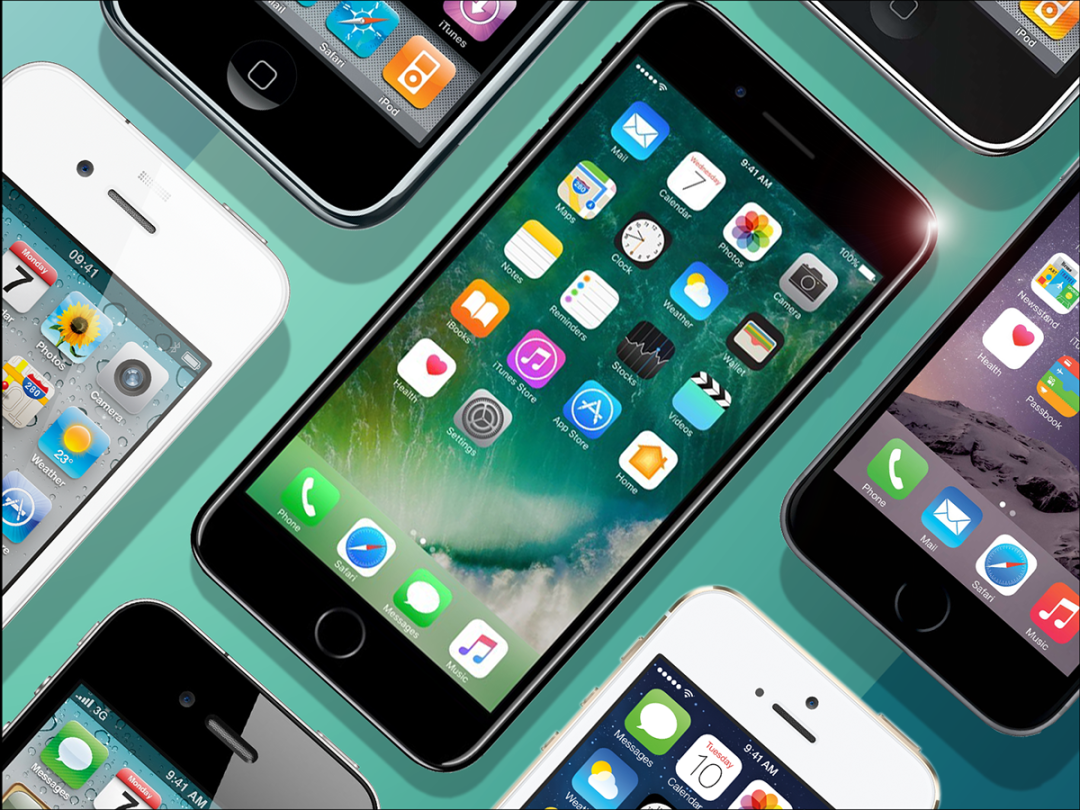
Three things are certain in life: death, taxes and a new iPhone arriving every year — so we thought we’d round up a history of the iPhone to help keep the hype alive now that this year’s upcoming phone is no longer…. well, upcoming.
Ever since Steve Jobs revealed Apple’s first foray into the phone world back in 2007, the hunt has been on for a competitor to rise through the ranks and challenge it for the coveted “phone of the year” crown. With that in mind, we’ve chronicled the biggest rivals from each year – and picked a winner for each. There’s a spot reserved for the iPhone 15 Pro Max and its closest rival once we’ve got on in for review, too. Don’t worry if you disagree with our picks — it’s all subjective fun, after all.
Oh and if you like this, check out our ultimate ranking of every iPhone – which iOS device comes out on top?
2007: iPhone vs Nokia N95
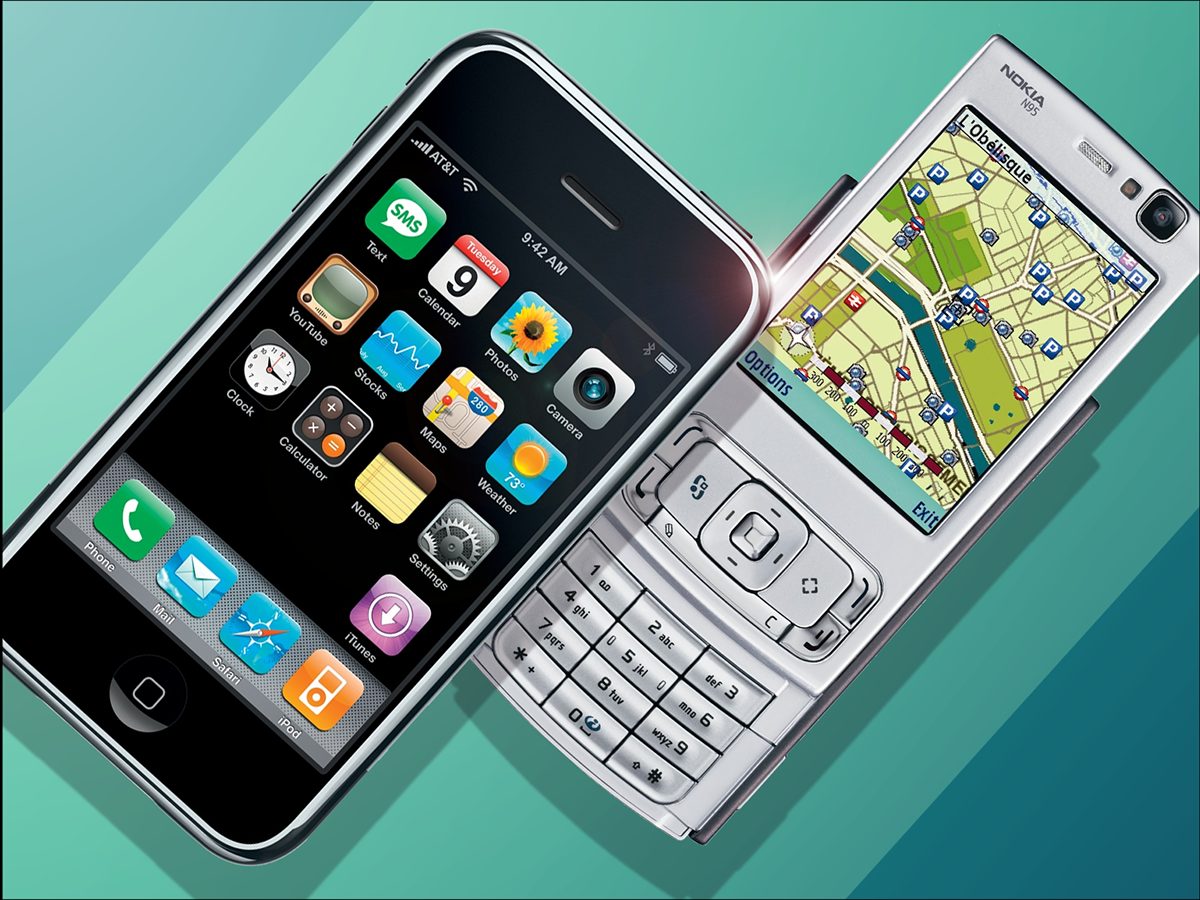
The iPhone
This was it. The OG. The phone that launched a thousand rivals, and marked the history of the iPhone. The original iPhone pioneered multi-touch displays in phones, which Steve Jobs labelled “magic” – even if Apple didn’t actually invent the tech. Chuck in a widescreen iPod and internet browser, and you had what would become the new standard for smartphones.
The challenger
With Android not arriving until 2008, Nokia was the undisputed king of phones – and the N95 was its most powerful creation. A 5-megapixel camera, GPS and Wi-Fi (which was rare back then) gave it the edge over Apple’s first effort. It also doubled as a media player, depending on which way you slid out the keyboard. Slick.
Winner: Nokia N95
The future of phones might have arrived, but Nokia had the superior tech. It was the ultimate phone of 2007, even with Symbian running in the background.
2008: iPhone 3G vs BlackBerry Bold
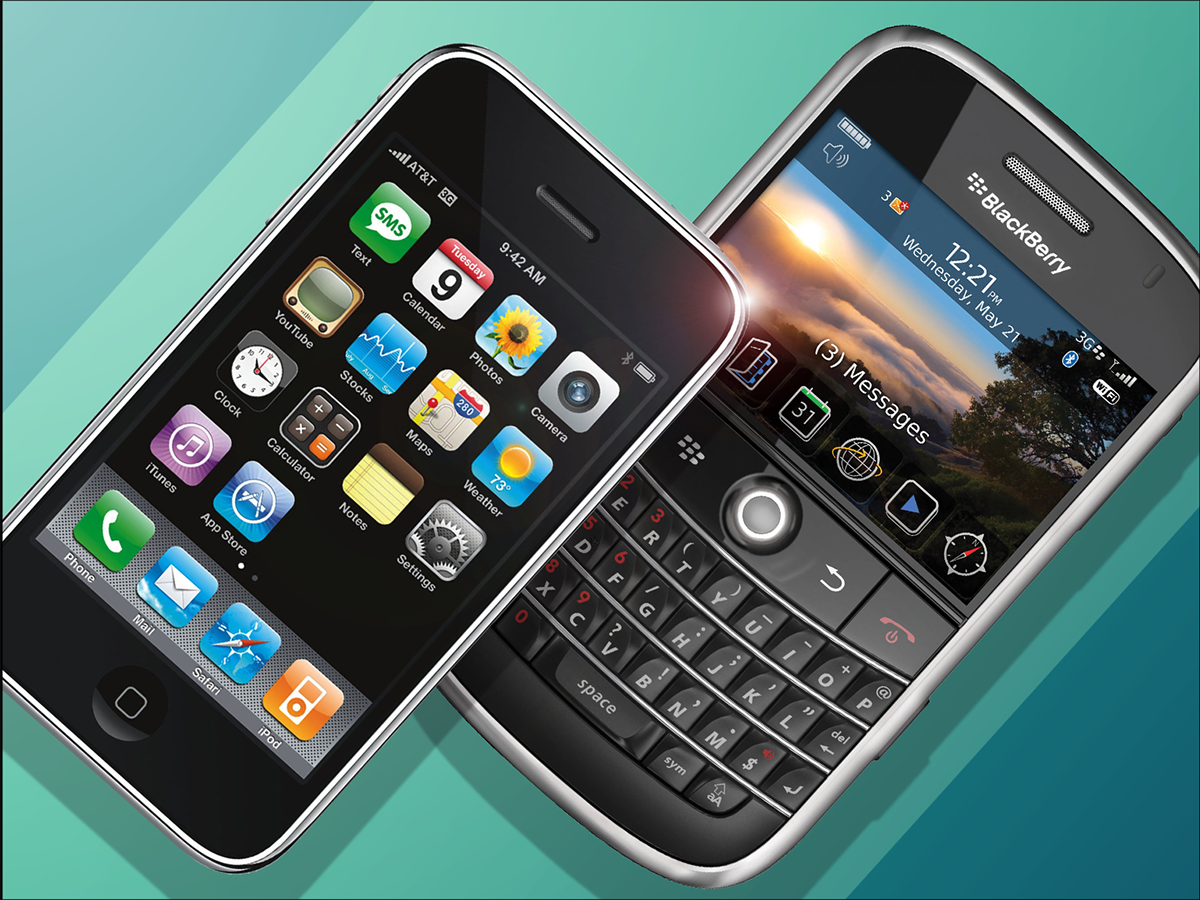
The iPhone
A more attractive outer shell and 3G connection were great upgrades, but the App Store is where Apple truly struck gold: 2008 opened the floodgates for third-party developers to create all manner of games, apps and utilities.
The challenger
With Wi-FI, GPS, Bluetooth and fantastic email support, Blackberry’s best Bold wasn’t going to lose any customers to Apple – which still hadn’t added MMS or copy-and-paste in 2008.
Winner: iPhone 3G
BlackBerry still had the edge for business users, but the App Store made a huge impact for everyone else, and it gave Apple the win in 2008.
2009: iPhone 3GS vs Palm Pre
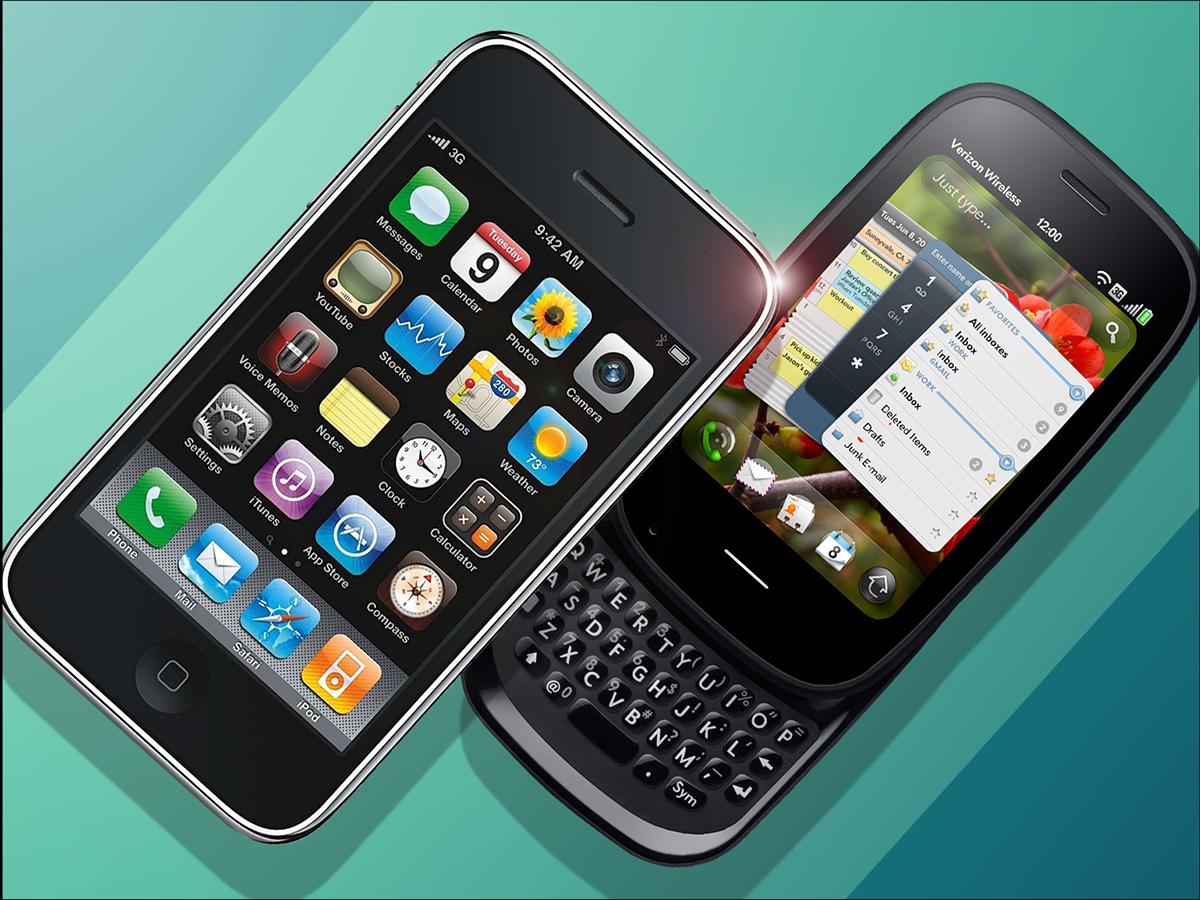
The iPhone
Probably one of Apple’s smaller upgrades, the 3GS bumped up the camera to 3 megapixels with video recording, doubled the RAM to 256MB and increased the storage to a max of 32GB. And don’t forget that digital compass.
The challenger
The Palm Pre was a huge departure for Palm, which had previously focused on PDA-style devices with styluses. It had a slide-out QWERTY keyboard to go with its multi-touch screen, while its multitasking and notification skills were years ahead of the competition.
Winner: iPhone 3GS
If anything, Palm was too forward-thinking with the Pre – wireless charging wouldn’t take off for another few years, and webOS would eventually migrate to TVs, rather than smartphones. Apple played it safe, and it helped them stay on top despite making relatively few changes.
2010: iPhone 4 vs HTC Evo 4G
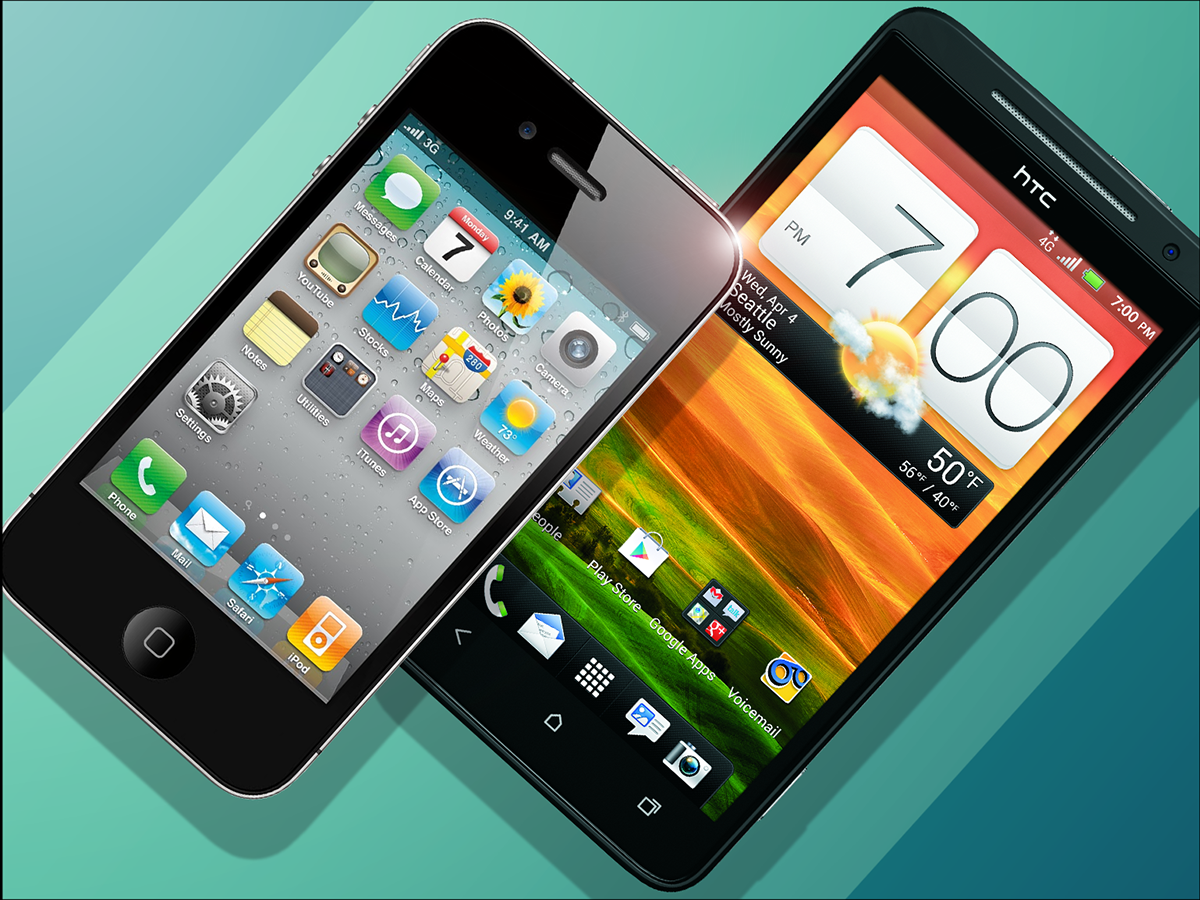
The iPhone
What a jump the iPhone 4 was. A new 5-megapixel camera, front-facing cam for video calls, a faster processor, multi-tasking and a stunning ‘Retina’ display capped off what was a massive improvement. But the biggest change of all was the new glass-and-metal design. Stunning.
The challenger
4G had arrived thanks to HTC, and it absolutely flew – if you lived in an area that supported it, at least. The UK didn’t, at this point, but that didn’t matter – the HTC Evo 4G had the latest version of Android available at the time, and the best specs of any phone that year: a 4.3-inch screen, 8MP camera with video recording and even an HDMI port.
Winner: iPhone 4
The iPhone 4 was the first model where the design quality that Apple had established with the Mac and iPod truly made their way to the smartphone world. This wasn’t an iPod with a phone app – it was a wholesale reimagining of what a phone could look like. And we loved it.
2011: iPhone 4S vs Samsung Galaxy Nexus
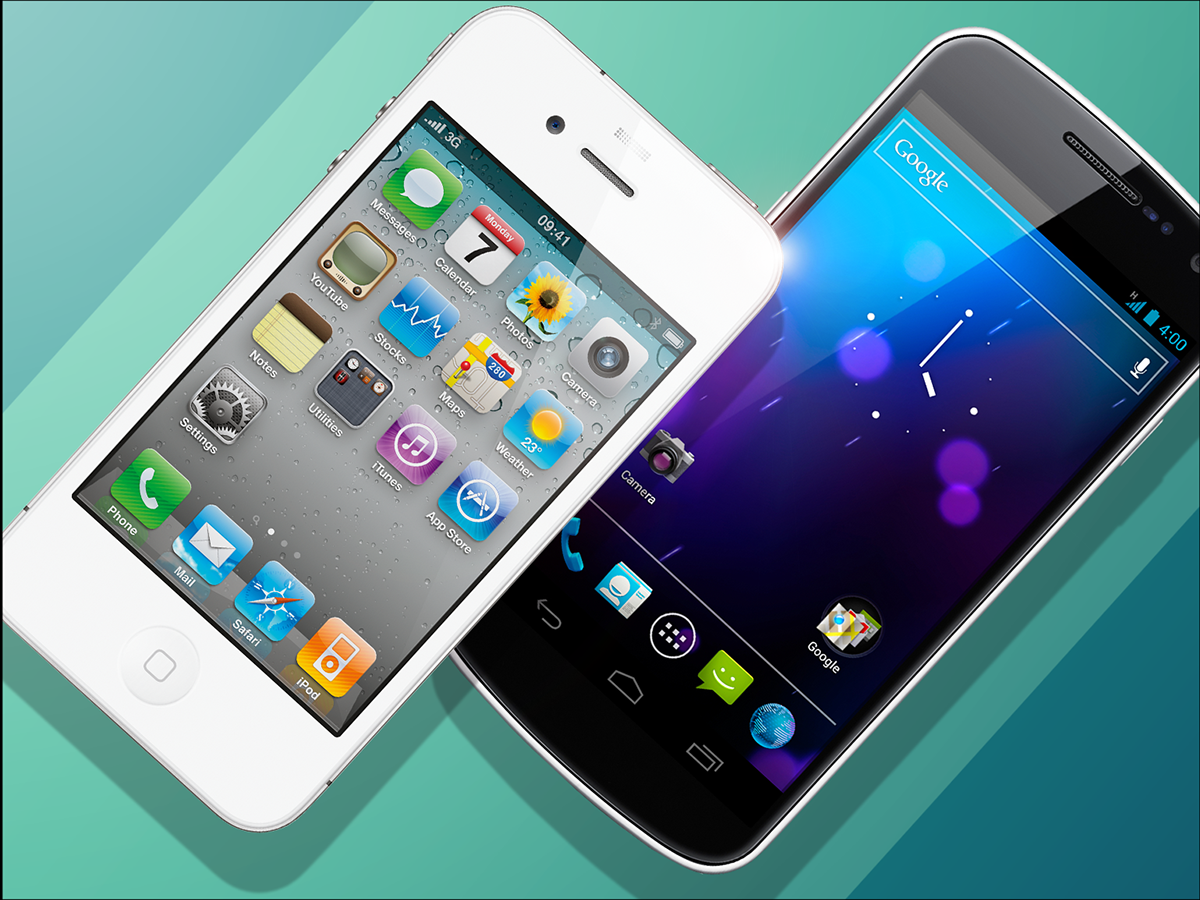
The iPhone
The iPhone 4’s 5-megapixel camera was pretty solid, but the 4S really came to the party with an 8-megapixel snapper. 1080p HD video was a highlight, along with faster shutter speeds. One more thing to mention for the 4S: “Hey Siri”.
The challenger
Google teaming up with Samsung was always going to be a recipe for success. In late 2011, the Samsung Galaxy Nexus rolled out with a massive 4.65-inch super AMOLED display, Android 4.0 Ice Cream Sandwich and NFC. It would deserve a place on this list due to hype alone, but that was a fantastic phone in its own right.
Winner: Samsung Galaxy Nexus
The iPhone 4s was a fine phone, but not a massive leap over the previous model. The Galaxy Nexus, however, was way out in front of all other Android phones – and also ahead of the iPhone, thanks to its bigger screen and the sweet delights of Android Ice Cream Sandwich. It paved the way for all future Android flagships.
2012: iPhone 5 vs Samsung Galaxy S3
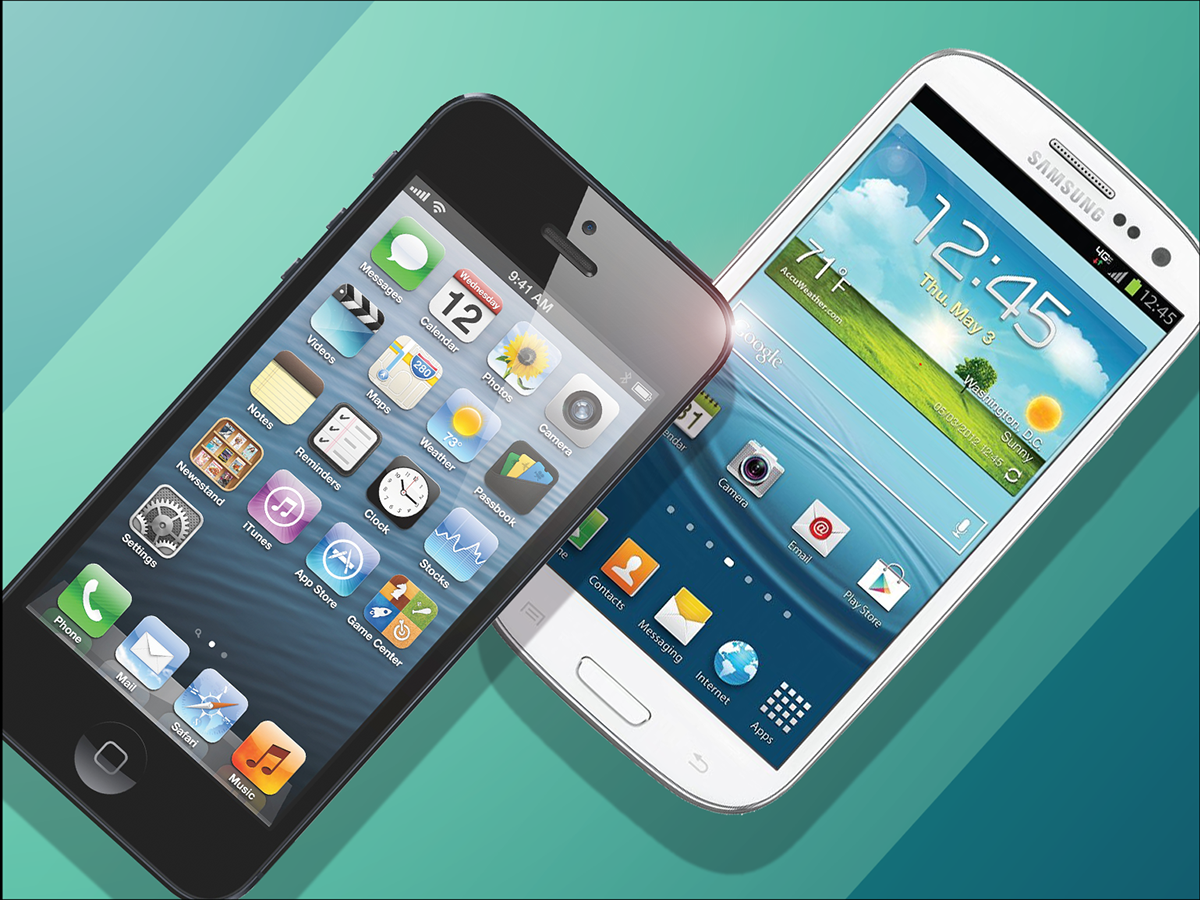
The iPhone
The iPhone 5S was a big step up over the 4S, thanks to its 4-inch screen and 4G connectivity. Oh, and it’s utterly gorgeous design, which saw the previous model’s glass back replaced with metal and the overall slimmed down to almost impossibly thin dimensions. The bigger display was also very welcome, but on the negative side, Apple also ditched the 30-pin connector in favour of the smaller “Lightning” ports, making all current accessories obsolete.
The challenger
Where to start with the Galaxy S3? A 4.8in display, the best design on any Samsung phone up to that point, excellent 8MP camera, NFC and all manner of clever tricks… Hell, it even had eye-tracking! The design still wasn’t quite at the iPhone’s level, on account of its plastic back, but the Galaxy S3 was a massive hit nonetheless.
Winner: iPhone 5
The Galaxy S3 was a great Android flagship, but the iPhone 5 was the very best iPhone ever (so far). That bigger screen made more difference than you might have imagined, and 4G was a crucial addition for a smartphone line which had started to fall behind the Androids. But really it was that design that once more thoroughly wowed us.
2013: iPhone 5S vs HTC One M7
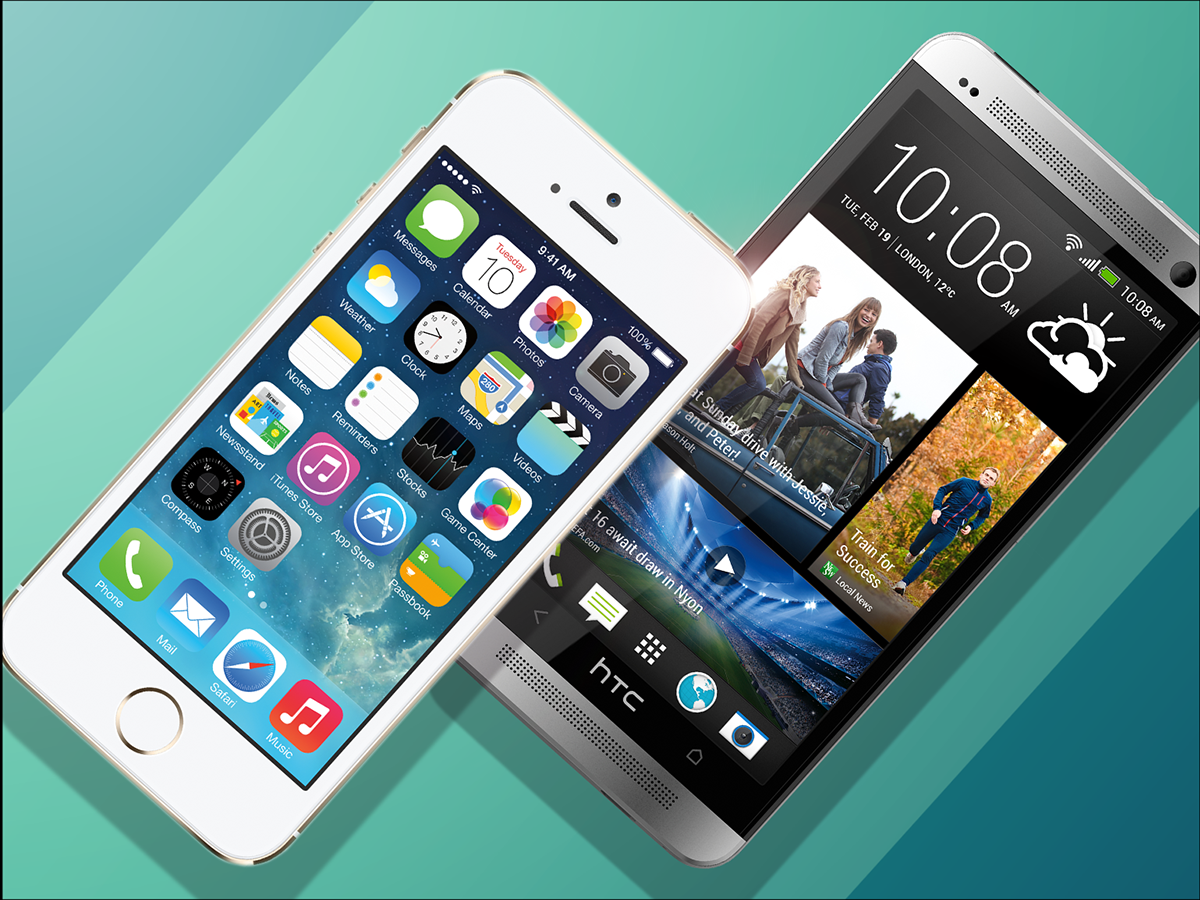
The iPhone
A better camera, faster processor… those things all sound a bit like a formality now. The iPhone 5s did show off one truly interesting new feature, though: TouchID. It seemed like a gimmick at the time, but fingerprint sensors have obviously become entirely essential to how the smartphone landscape has evolved.
The challenger
An absolute no-brainer, this – the HTC One had it all. The stunning all-metal design was backed up by front-facing stereo speakers which actually sounded good, a kick-ass camera for low-light shots and a 4.7-inch display that had the crispiest resolution on the market. It’s still one of our favourite phones ever.
Winner: HTC One M7
This one’s not even close: the HTC One took 2013, and in the process set the trend for all-aluminium phones that would continue for the next five years. It’s only now that phone-makers are experimenting with other materials again.
2014: iPhone 6 vs LG G3
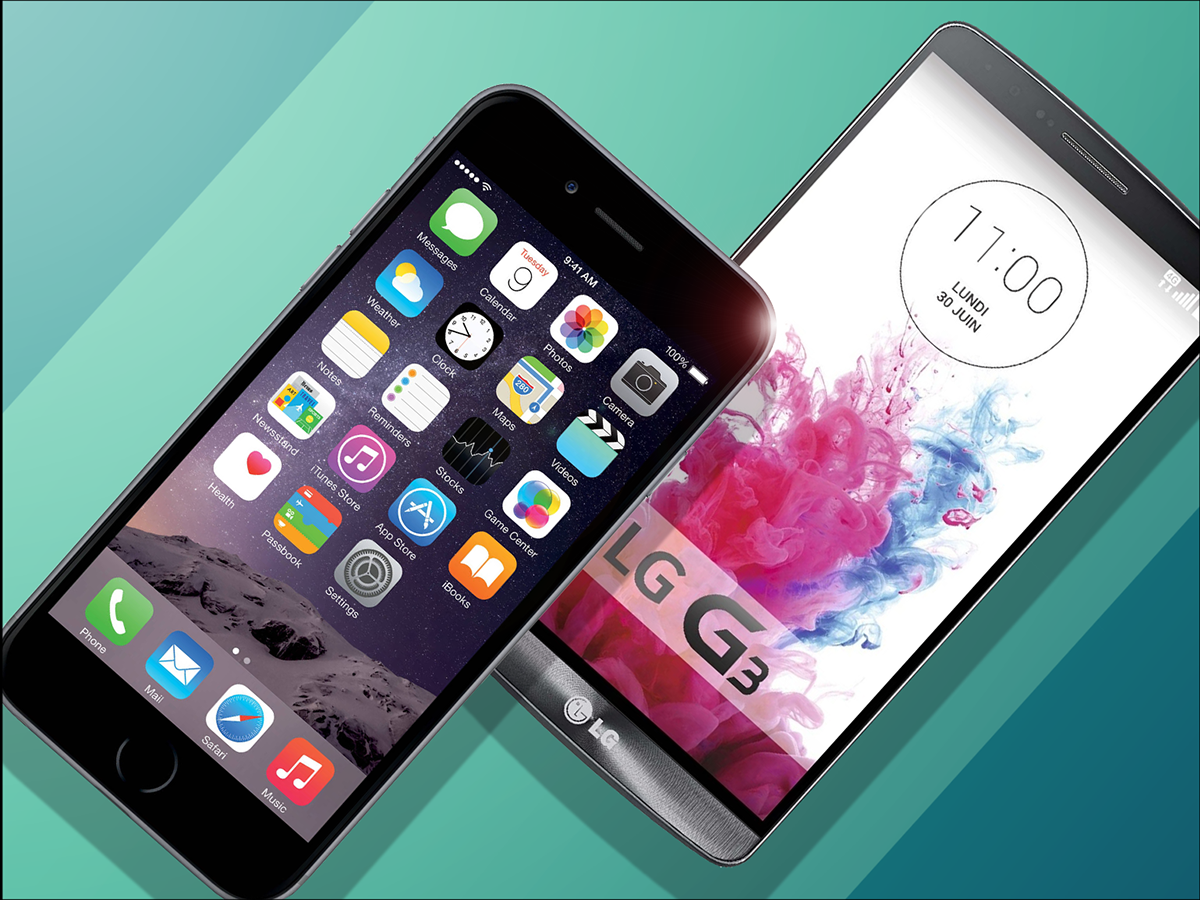
The iPhone
After a couple years of trailing behind the Android competition, Apple finally entered the big-screen smartphone market with the 4.7-inch iPhone 6 and 5.5-inch iPhone 6 Plus. They also embraced a new, thinner body with a rounded aluminium design. No doubt about it, these phones looked good – even if others such as HTC had been using metal for some time.
The challenger
What a screen! The LG G3’s screen had 538 pixels per inch, compared to 326 on the iPhone 6, stretched across a 5.5in display which also did away with chunky bezels. The battery did take a hit, but a superb 13-megapixel camera and improved design made the G3 LG’s first legitimate “iPhone Killer”.
Winner: LG G3
Size wasn’t everything in 2014, and with LG stepping up its game in other areas like the camera, it took the victory. The 6 Plus might have put up more of a fight than the 6, but it didn’t do enough.
2015: iPhone 6s vs Samsung Galaxy S6 Edge
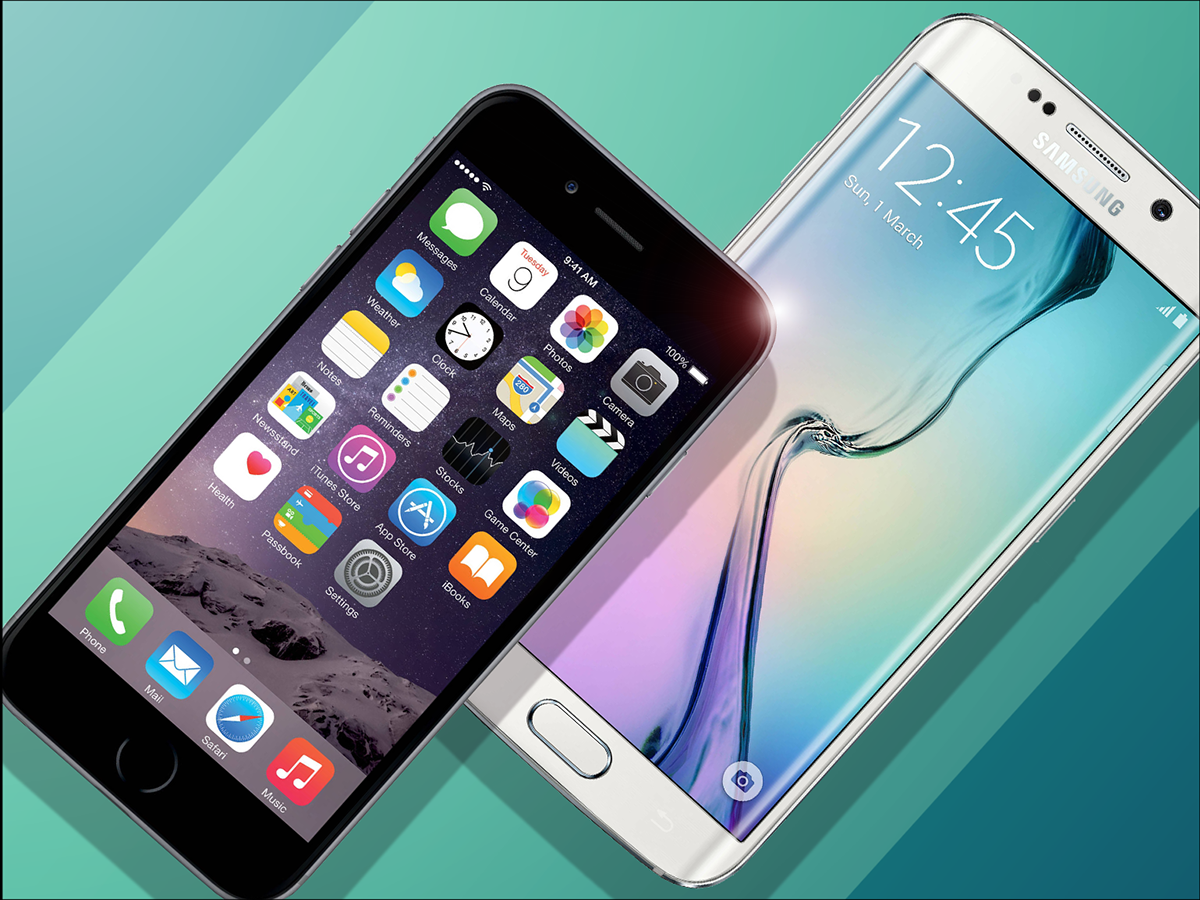
The iPhone
The iPhone 6s upgraded the camera to 12MP and also introduced 4K video. Outside of the camera, Apple added a quirky new feature called Force Touch (pretty much right clicks, but for a touchscreen). And of course, it also blessed the world with a pink – sorry, we mean Rose Gold – colour option.
The challenger
The typical smartphone screen got a major shakeup with the Samsung Galaxy S6 Edge, which curved over the sides of the phone rather than laying flat. The curve didn’t add too much in terms of features, but that didn’t matter – because the phone itself was fantastic. The only downsides? Samsung scrapped expandable storage and waterproofing with this model.
Winner: Samsung Galaxy S6 Edge
The curves not only made for some fun features, but also ensured the S6 Edge was the best-looking phone on the market – giving Samsung the design edge over Apple it so sorely needed after years of being in second place.
2016: iPhone 7 vs Google Pixel
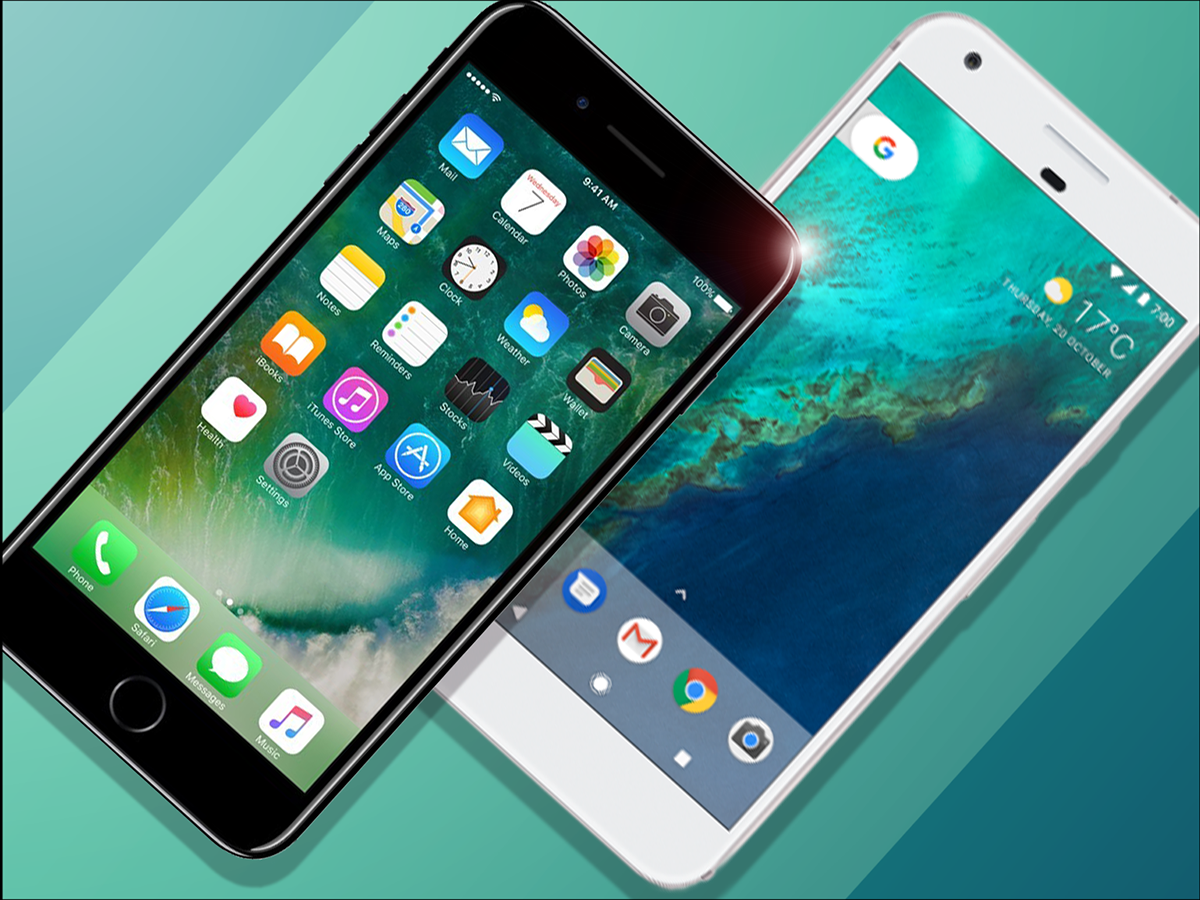
The iPhone
After nine years, Apple bucked the trend with the iPhone 7. Instead of arriving with a drastically changed design, the new model looked eerily similar to the previous iteration – but under the hood it was an impressively different beast. Waterproofing, finally. Dual-speakers, finally. The return of black, finally. The only downside was saying goodbye to the headphone socket.
The challenger
Google finally killed the Nexus brand in 2017, but replaced it with the Pixel. It came out swinging, with arguably the best camera ever fitted to a smartphone, and was built specifically for Google’s own version of VR, Daydream. Even so, its wedge-like design and half-glass rear would divide opinion, and the price was undeniably expensive.
Winner: The iPhone 7
The Pixel was Google’s effort to compete directly with Apple – it even cost the same. Unfortunately it needed more polish, and wasn’t able to dethrone an iPhone developed off the back of a decade of experience. It had superb specs, and made upgrades Apple fans had been pining for since 2013 – even if the missing headphone socket wasn’t one of them.
2017: iPhone X vs OnePlus 5

The iPhone
The iPhone X was the biggest change to the iPhone range for quite a few years. It ditched the home button, for starters. As a result, Touch ID fingerprint scanning also made way for Face ID, and the accompanying front screen notch that came with it. While the new navigation gestures may have taken some users some time to get used to, the camera, stunning design, and iPhone 8-trouncing specs made the X the most covetable iPhone ever made.
The challenger
While the Samsung Galaxy S8 won our overall Best Smartphone of the Year award back in 2017, it’s the OnePlus 5 that stands out in our memories thanks to its combination of superb flagship features, and wallet-friendly price tag. The latter made it far more affordable than both Apple and Samsung’s flagships, letting Android fans taste top-tier specs, fast charging, and raw power, for less.
Winner: The OnePlus 5
While the iPhone X was a money-no-object winner, we have to applaud the OnePlus 5 for offering an incredible amount of tech (some of which surpassed the competition), for a much more accessible price tag.
2018: iPhone Xs vs Huawei Mate 20 Pro
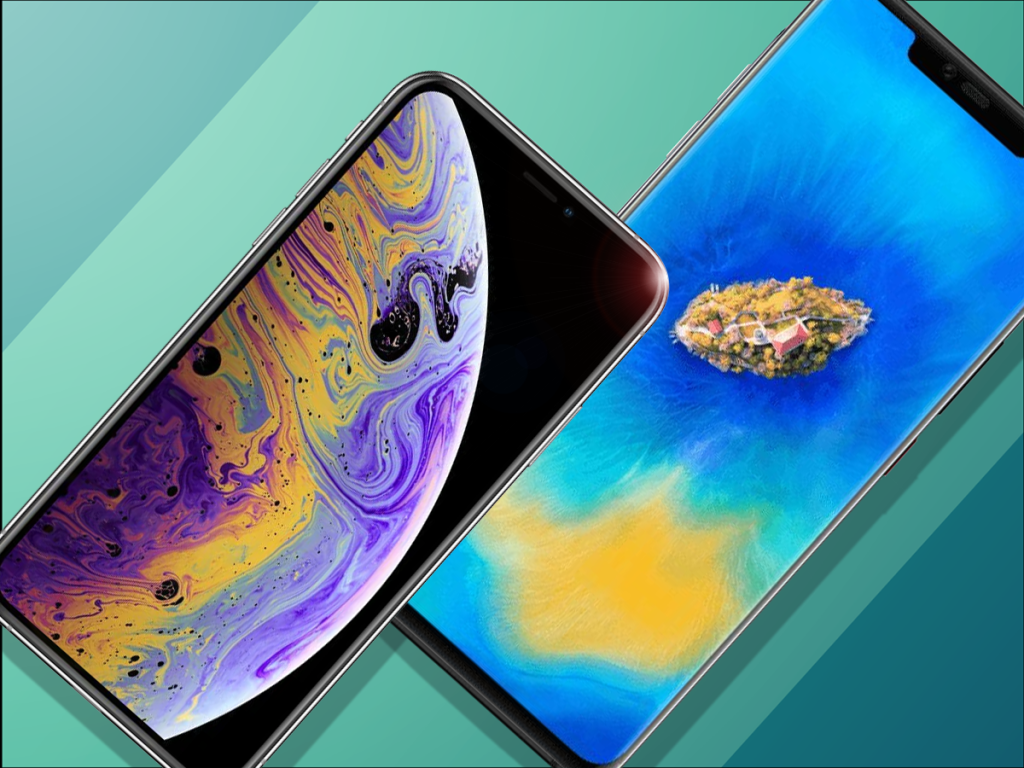
The iPhone
Near-identical to its predecessor, the iPhone Xs’ main upgrade was in the camera department, with a more powerful processor thrown in for good measure. With a larger 12MP main camera and superb dynamic range performance, the Xs stood head-to-head with some of the best cameraphones at the time.
The challenger
As good as the iPhone Xs’ camera was, the one on the Huawei Mate 20 Pro was still better. In fact, Huawei’s flagship was one of the most tech-packed, feature-laden phones of the year, with night photography powers that no other handset could match. With its unique looks, power, and imaging prowess, reminiscing about it has made us realise how much we miss non-crippled, Google app-toting Huawei handsets today.
Winner: The Huawei Mate 20 Pro
The Mate 20 Pro shrugged off fierce competition to become one of the best phones of 2018. Despite Apple’s efforts, the refreshed Xs could do little against the sheer specs and performance of Huawei’s beastly handset.
2019: iPhone 11 Pro vs Huawei P30 Pro
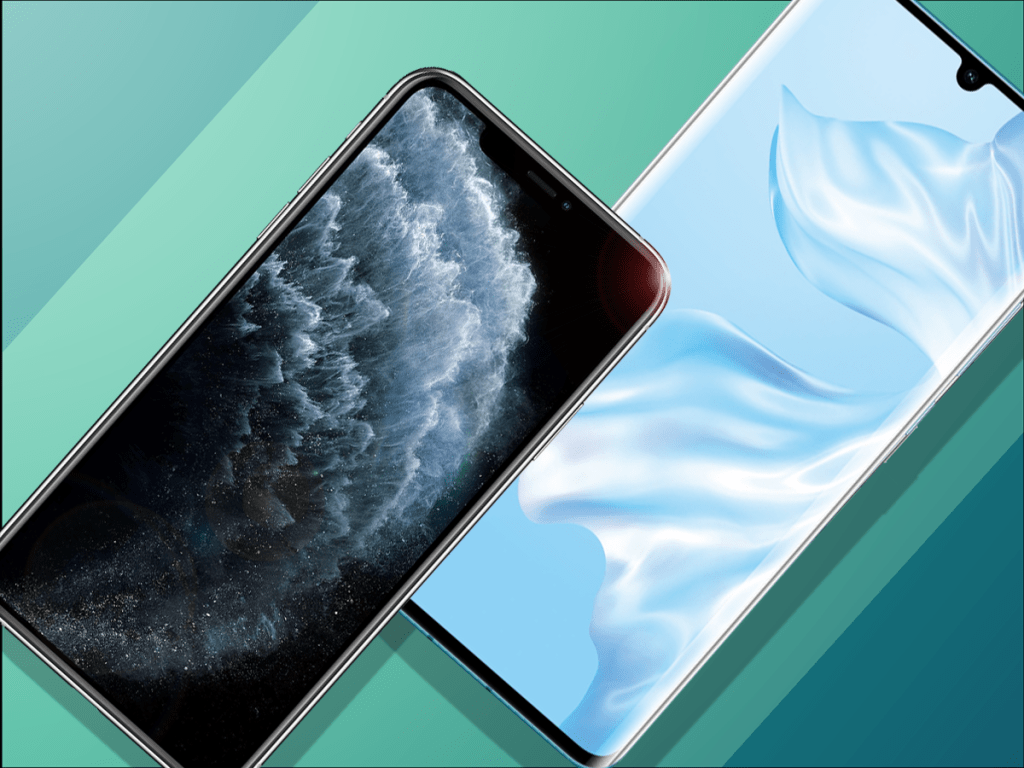
The iPhone
The iPhone 11 Pro was the first Apple handset to launch with the ‘Pro’ moniker. Alongside its larger Pro Max sibling it was, as you’d expect, the most powerful iPhone released to date, with a new triple-camera system making it a formidable tool for photography fans. Apple’s new Night Mode in particular opened up accessible low-light shots to the masses.
The challenger
The P30 Pro blew us away with its 5x optical zoom periscope lens, and lossless 10x zoom performance. Its overall triple-camera setup remains highly regarded today, and its stunning design, slick curved screen, and high-end specs made for a formidable opponent — not just for Apple, but the rest of the smartphone world too.
Winner: The Huawei P30 Pro
Despite having the best iPhone camera to date, no handset could match the sheer versatility offered by Huawei’s superb 2019 flagship, which is why it wins this round.
2020: iPhone 12 Pro vs Samsung Galaxy S20 Ultra
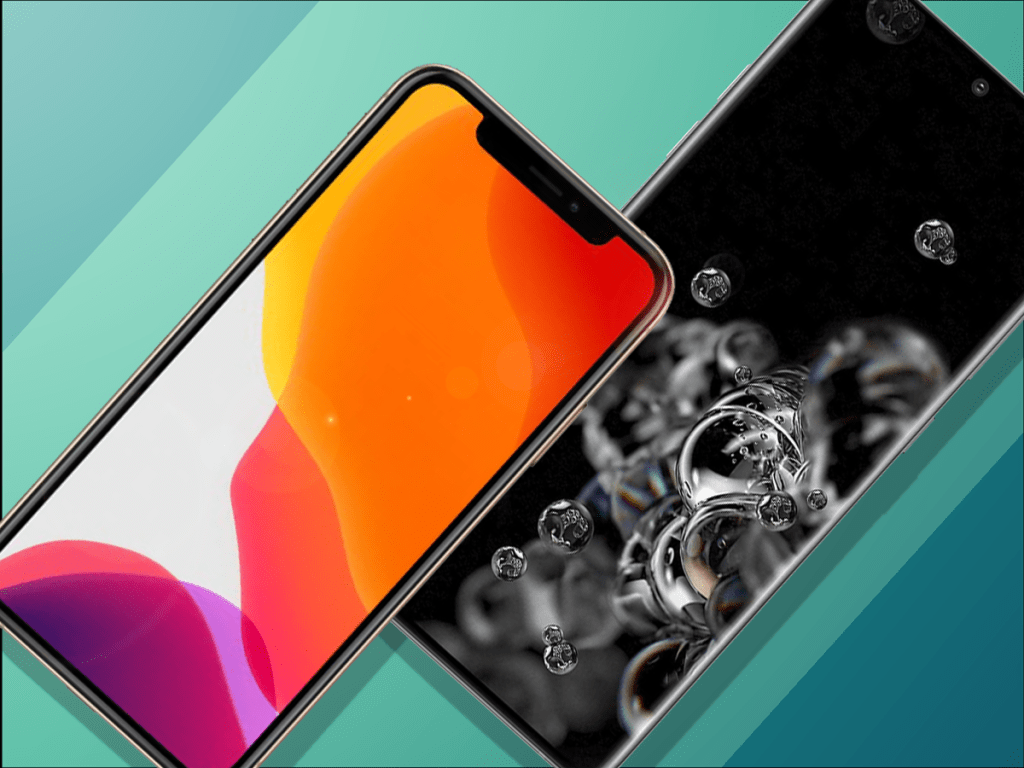
The iPhone
The iPhone 12 Pro landed with Apple’s speedy A14 Bionic processor, and an improved 2x optical zoom lens. Image quality and general performance were as premium as you’d expect, though some users may have been disappointed with its “only” 60Hz screen.
The challenger
The Galaxy S20 Ultra was another feature-packed success from Samsung. With 4x optical zoom and 10x hybrid powers, it could snap clear shots of objects further away, without shots resulting in a pixellated mess. Its other two cameras were no slouch either, and neither was its screen. With 120Hz of buttery-smooth refresh rate at its disposal, it put Apple’s efforts to shame. Mind you, battery life at the higher refresh rate did take a hit…
Winner: The Saumsung Galaxy S20 Ultra
The S20 Ultra pushed the envelope more than Appl’es latest iPhone, with a superb camera, slick screen, and some of the best overall tech available at the time (if you ignore its slower charging times, that is).
2021: iPhone 13 Pro vs Google Pixel 6 Pro
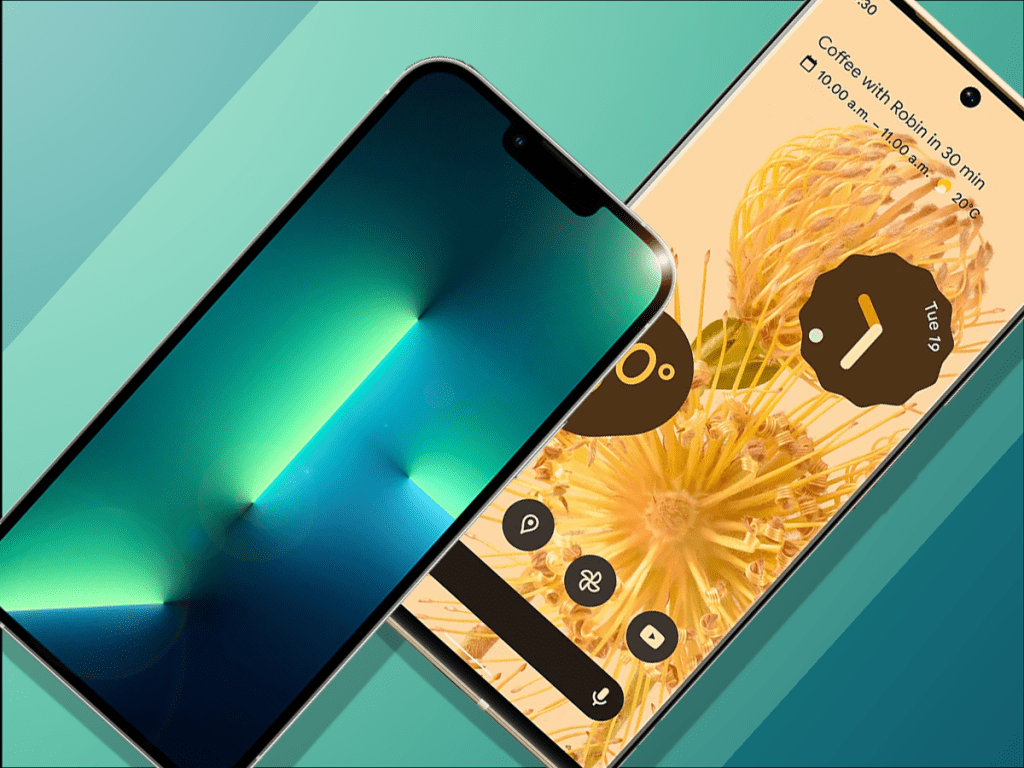
The iPhone
The 13 Pro marks yet another occasion where the visual similarities between the old and new iPhone models make a reappearance. At least the screen refresh rate doubled to 120Hz, narrowing the gap (at last) between Apple’s efforts and those of countless other Android handsets. Other improvements include a wider aperture camera for improved low-light shots, and a welcome 3x optical zoom lens.
The challenger
Google may have faltered a few times leading up to the release of the Pixel 6 and 6 Pro, but 2021 saw the company return to smartphone glory. From its nippy new home-grown Tensor processor, to superb AI-bolstered cameras (complete with fancy editing tricks) and a refreshing design that stood out from the crowd, it won the smartphone world’s (well-deserved) praise.
Winner: The Google Pixel 6 Pro
The Pixel 6 Pro not only comfortably beat out the iPhone 12 Pro, but it also won Stuff’s Gadget of the Year Award, further cementing it as one of the best handsets released in recent years.
2022: iPhone 14 Pro vs Samsung Galaxy S22 Ultra
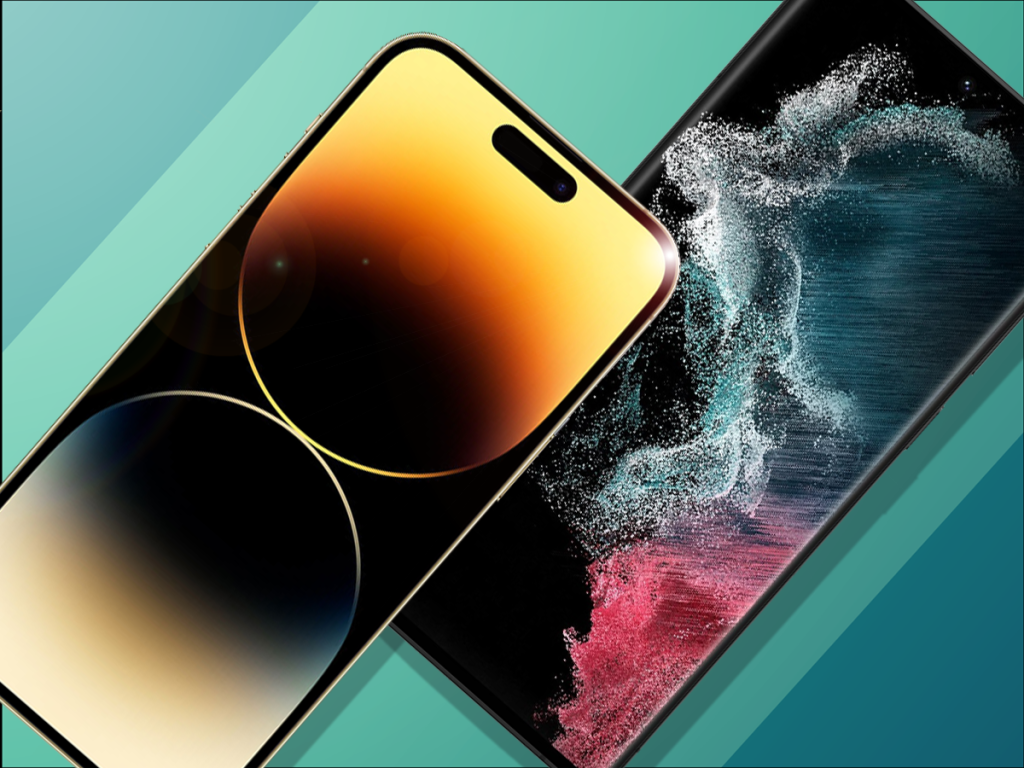
The iPhone
The iPhone 14 Pro and Pro Max made headlines with their new Dynamic Island screen cut-outs. Gone was the notch. Instead, Apple fans now had an elongated pill-shaped cutout that better blended-in the Face ID cameras, while cleverly being incorporated into notifications and controls, depending on the app being used. Other big improvements (beyond the obvious fastest smartphone processor in the world update), are a pixel-packed 48MP camera, and a long-overdue always-on display.
The challenger
The Galaxy S22 Ultra was, as expected, one of the most advanced smartphones ever made at launch, and remained a strong competitor for the iPhone 14 Pro despite launching six months earlier in the year. Fantastic performance, great battery life, a built-in stylus and one of the best camera setups on sale at the time made it the best choice for Android shoppers. Few handsets came even remotely close to its astonishingly powerful 10x lossless optical zoom.
Winner: The iPhone 14 Pro
Despite Samsung’s efforts, Apple did just enough to make the iPhone more exciting again, thanks to its improved camera and updated screen cut-out.
2022: iPhone 15 Pro Max vs ???
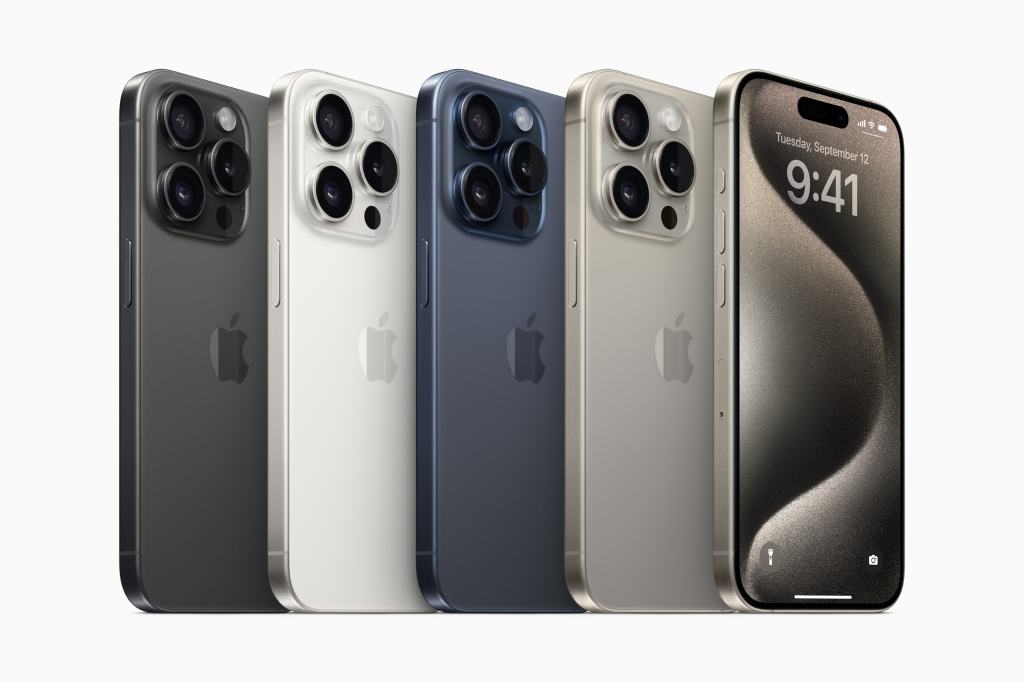
The iPhone
The iPhone 15 Pro Max is the undisputed king of this year’s Apple phones. It might share its titanium frame and USB-C port with the smaller iPhone 15 Pro, and both swap the classic mute switch for a customisable action button, but only the pricier model’s trio of rear cameras get a 5x optical zoom lens for getting a lot closer to the action. The iPhone 15 Pro tops out at 3x. Hero features from last year like the Dynamic Island cut-out and always-on display option make a return, while the A17 Pro chipset promises even greater performance.
The challenger
An early 2023 launch for the Galaxy S23 Ultra saw Samsung add a huge pixel count main camera and even faster hardware to its flagship, and half a year later it’s still a fantastic handset. So it’s an obvious choice for compare to the latest iPhone, right? Well, at the time of writing Google is mere weeks away from revealing the Pixel 8 Pro, which we have an inkling might give Apple more of a run for its money on the photography front…
- Read more: The best smartphones in the world right now


